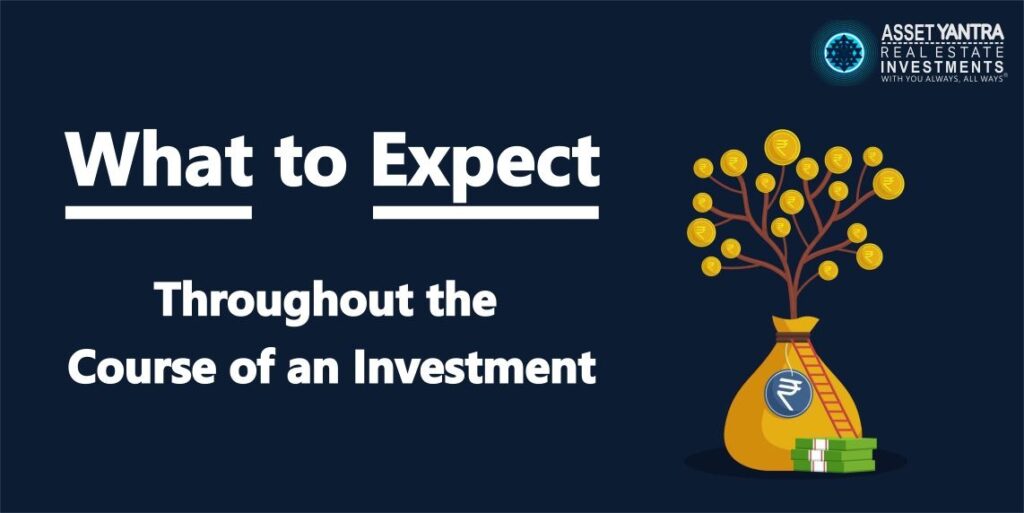Let’s assume that you just invested some amount in an investment offering. What will happen with that investment is the big question. Also, over the course of an investment, you may see money reverting into your account. Not only in different amounts but also at varying times. How does this happen and what events revolve behind the investment are few other questions.
This article will certainly shed light on all of those questions and give you actual clarity over what exactly happens through the Course of an Investment.
Stages in Investment Lifecycle

Earn Interests
To start with, once your investment gets marked active in your portfolio, it begins to earn interest. Accrued interest is an interest that the investment yields. But is not paid out yet. Depending on the investment plan, you would be paid your accrued interest right up front, or monthly, or quarterly, or on an event-based basis.
Payout of Fund Expenses
Depending on the offering structure of an investment, a flat annual fund expense will be paid out from the interest that you’ve earned. (For example, annual fund expenses in real estate investments would be tax deductions. Expenses associated with repairs and maintenance, etc.) Once this expense is fulfilled, future interests will be made directly to your account.
Pre-Defined Payment Schedule
Some of the investment plans have pre-defined payment schedules that pay interest monthly or quarterly. Although your investment is earning interest every day. It is only distributed to you at definite intervals (like weekly, monthly, or quarterly, for example, all depending upon the offering terms).
Further, a monthly payment schedule does not necessarily mean that payments will for sure be made on the first of each month. Owing to the processing time it takes i.e., As funds must flow through a long chain of the borrower, originator, the investment company, and then to the investors.
Event-based Payment Schedule
Some offerings pay interests on an event-based payment schedule. ‘Event-based’ means that investors receive payments post to an ‘event’ i.e. When individual cases within a portfolio settle (also called a ‘settlement event’). Their payment dates and amounts cannot be pre-decided. For instance, take the legal settlements. The time when they’d settle at court cannot be predicted.
When investing in a portfolio of several cases, an investor can presume to receive multiple different payments throughout the aimed length of the investment. Depending on the settlement activity rate. Instances might be like;
- Sometimes several settlements may be made in the same month and trigger multiple payments.
- Other times there may be longer periods where there’d be no settlements at all. Therefore no payment distributions would be made.
Further, few investments, most often the short-term Marine investments. May make one single upfront interest payment for the term of the loan. It’s quite important to go through the details of each individual investment to comprehend the expected payment schedule. Usually, this kind of upfront interest investment with a 6-month term has a maturity date that is 180 days (6 months) from the initial funding date.
Return of Principal Amount
Depending on the structure of investment, you may also obtain principal payments during the course of an investment. It is significant to note that interest is paid out on the whole outstanding principal vs. interest paid. However depend on how much interest has been paid on the overall portfolio at that point in time when a case (or cases) settle.
In a real estate offering that consists of a portfolio of several loans, each individual loan often has differing maturity dates. For instance, if there are two different loans in the portfolio. Loan X may mature in 12 months and Loan B may mature in 18 months. Therefore, investors should except to obtain a portion of their principal back into their accounts after 12 months and the leftover outstanding principal after completion of 18 months.
Few Important Considerations
- It is salient to note that there is a chance that the borrower could return the portion of the loan earlier or later than its presumed maturity. The maturity dates of every loan that a portfolio encloses is always mentioned in detail in the offering’s Investment Memorandum.
- It is also important to note that once the principal is returned, it will no longer reap interest. However, all the other outstanding principals will continue to generate interest at the scheduled rate of interest associated with the offering until the time it is repaid.
Knowing what you are about to reap all through the course of your investment makes the investment life easy for you rather than make you worry about what would happen in the next point in time. This accounts for a good and valid reason as to why you must know all about your investment before proceeding any further with it.
Asset Yantra & GAK Group is an online platform that offers various investment plans which are customized based on the common investor objectives. Do check them out to obtain maximum benefits out of the investment.
Course of Investment FAQs
The stages include:
- Earning Interests
- Payout of Fund Expenses
- Return of Principal Amount
They are:
Pre-defined payment schedule –
Some of the offerings have pre-defined payment schedules that pay interest weekly, monthly, or quarterly, for example, all depending upon the offering terms.
Event-based payment schedule –
Some offerings have event-based payment schedules that pay the interest post to an ‘event’ i.e. when individual cases within a portfolio settle (also called a ‘settlement event’).

